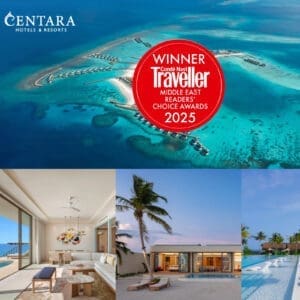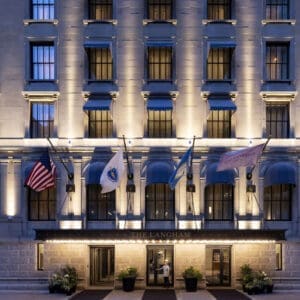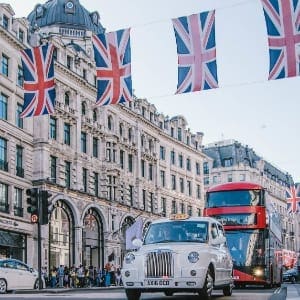 Marriott International and the Hurun Research Institute have released a report on the Chinese Luxury Traveler 2016. This inaugural study marks the first-of-its-kind collaboration between an international hotel company and a leading authority on Chinese luxury travel.
Marriott International and the Hurun Research Institute have released a report on the Chinese Luxury Traveler 2016. This inaugural study marks the first-of-its-kind collaboration between an international hotel company and a leading authority on Chinese luxury travel.
At a glance:
- China’s young luxury travelers go abroad every 3-4 months, mainly for leisure
- They spend RMB 420,000 (US$65,000) on tourism per year and RMB 220,000 (US$34,000) on travel shopping
- They demand personalized luxury experiences, Wi-Fi, and next generation guest services on smart devices as standard
- Japan is the top destination for shopping, France is the most popular destination in Europe and Australia is the top destination for leisure
The report’s key findings reveal a shift in travel habits among this younger generation of travelers, aged 18 to 36. The research shows that they want a more personalized luxury experience and added value throughout the entire hospitality ecosystem – from planning a trip, to requesting guest services, to selecting which loyalty program to join.
The report reaffirms that when it comes to services and information, China’s young luxury travelers prefer to do it digitally. Interactive guest services on smart devices are far more popular than traditional guest services, and travelers also expect this smart technology to record and manage their personal preferences.
Not surprisingly, China’s young luxury travelers conduct their research on digital platforms. WeChat emerged as their primary source of travel information, obtained from official WeChat accounts and the accounts of friends and professional travel advisors. Third-party apps are also important information channels and popular platforms include C-Trip, Qunar and Tuniu.
Diverse in their travel motivations, China’s young luxury travelers are seeking a wider choice of unique and novel travel experiences. They are interested in adventure travel, polar exploration and road trips that take them further afield to a wider range of destinations around the globe.
With greater opportunities at their fingertips, this group of young luxury travelers feel underwhelmed by loyalty programs, many of which are seen as low value and not unique.

“This is a key focus area for Marriott,” said Peggy Fang Roe, Chief Sales and Marketing Officer, Asia Pacific at Marriott International, which in the first quarter of 2016 saw a 7% increase in domestic travelers in China and a 25% increase in Chinese outbound travelers.
Fang Roe continued, “We are responding to the desire for personalized luxury and services by evolving our loyalty program Marriott Rewards, which goes far beyond hotel-level perks. Elite Member benefits now include tailored VIP access to rewarding experiences such as culinary demonstrations, concerts and catwalks, the NBA Global Games in China, and lots more. We are also piloting a new hospitality program called “Li Yu” (礼遇) which is tailored specifically for our Chinese guests, with Mandarin speaking personalized assistance and service across our hotels to make them feel at home, wherever they go.”
Rupert Hoogewerf, Hurun Report Chairman and Chief Researcher, said, “Despite the economy slowing, the impact on outbound travel from high net worth individuals seems to have steadily grown. The young luxury travelers has developed significant spending firepower, minted on the back of the recent boom in Chinese entrepreneurship, together with a growing class of second generation ‘rich kids’.”
Key findings from The Chinese Luxury Traveler 2016
Experienced travelers with high spending power
This year’s report focuses on young, luxury travelers born after 1980. Relatively wealthy, these Generation Y travelers spend an average of RMB420,000 (US$65,000) on tourism per household, per year, and an average of RMB220,000 (US$34,000) on tourist shopping – primarily clothing, bags, watches and jewelry. Their average hotel budget is RMB3,100 (US$500) per night. Experienced travelers, they have been to an average of 13 countries and have been abroad 3.3 times in the past year for approximately 25 days, 69% of which was leisure travel.
Popular destinations
Europe is the destination of choice for young luxury Chinese travelers, with 61% of respondents visiting that region in the past year and 65% planning to visit in the next three years. France was ranked the most popular international travel destination. Japan was the most memorable destination for Generation Y luxury travelers in 2015 and their most visited destination over Chinese New Year 2016. Travel to Japan was strong last year due to its close proximity to China, coupled with convenient shopping, attractive dining experiences, and a modern, sophisticated culture.
Travel time: flexible and family-oriented
55% of young luxury travelers said that in the next year, they are most likely to travel whenever it fits their schedule. National Day Golden Week was the second most popular period, with 36% of respondents claiming this as their preferred travel period. It is interesting to note that most Generation Y luxury travelers have either very young kids or no kids, and that only 20% are interested in traveling over the summer. Family travel peaked during Chinese New Year, with 56% of young luxury travelers going abroad last year over this period. 90% traveled with family or friends, in a party of four people on average, and stayed abroad for 8.5 days.
Travel purpose: more and more diverse
Compared to 2015, young luxury travelers are expected to seek more diverse travel experiences in the next three years. Leisure and vacation are still the most popular reasons to travel, however young travelers also cite new and more challenging reasons to go abroad. Global travel, adventure travel, polar exploration and road trips have captured young luxury travelers’ imaginations, each expected to rise by 25%, 52%, 38% and 75% respectively over the next three years.
Hotel selection: what influences choice of accommodation
Although 41% of general travelers say that room cleanliness is their top concern when choosing a hotel, 42% of young luxury travelers with a household net worth over RMB 100 million cite personalized service as their most important consideration. Luxury amenities are also important, including new facilities and cozy lighting. They seek a tailored guest experience, including a selection of pillows, and personalized service through a butler or interactive digital channels. They favor hotels that provide high-tech digital equipment, like Wi-Fi (73%) and Smart TVs (55%), which offer a more enjoyable stay as well as bespoke, convenient service. They prefer brands and hotels with unique art and design that make the travel experience feel unique and fun.
Loyalty and travel programs
In terms of frequent flier programs, Air China is the clear winner (51%), followed by China Southern Airlines and China Eastern Airlines. For international travel, Lufthansa is the top choice due to a diverse selection of European routes and convenient transit (19%). In general, awareness of hotel loyalty programs is low among young luxury travelers, who say that many membership programs don’t offer unique or high value benefits.
Information channels
Young luxury travelers primarily receive information through official WeChat subscription accounts (48%), WeChat Moments shares from friends (47%), and websites (42%). In regards to gender, male travelers tend to obtain information from websites while female travelers prefer WeChat shares and friends’ recommendations. Third-party apps are also important information channels, with C-Trip, Qunar, and Tuniu being the most popular platforms.
Popular destinations: Insights
Shopping and food in Japan are popular with young luxury travelers, while the USA is seem as an important destination for business travel. France is the most popular destination in Europe and known as a shopping paradise. Australia is the top leisure destination, while the UK is the top destination for visiting friends and family.
A full copy of the report is available below:
English – media.marriottrewardsapac/hurun/en
Chinese – media.marriottrewardsapac/hurun/cn















